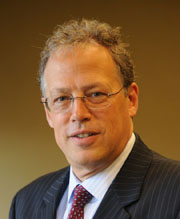
Frog’s-eye-view of life in D.C. swamp
The House majority leader says unelected bureaucrats are the greatest single threat to the nation. Senior Correspondent Mike Causey spotlights some of the swamp...
When you run for president of the U.S., it is better to be an outsider — like Jimmy Carter vs. Gerald Ford or Bill Clinton vs. George H.W. Bush or Donald Trump vs. Hillary Clinton. Bashing bureaucrats, Washington, all creatures who live inside its infamous beltway, is by-and-large a good PR move. Some believe that before we build a wall on the extended Mexican border, we should dedicate 70 miles of fencing to keep folks from inside I-495 and their rules and regulations in quarantine.
Washington, D.C. does do some incredibly stupid things. And it is definitely out of touch with much of the nation. But many, maybe most by a lot, of the stupid ideas that we foist on you come from politicians from your state and district. You may hate politicians, but, thanks to the bipartisan rigging of congressional districts and general apathy, you keep sending in the same clowns. Most people agree our tax code is a complex joke. But blaming bureaucrats in the IRS for it is missing the mark. They do what the politicians tell them. Same for many other operations.
The latest congressional assault on bureaucrats comes from House Majority Leader Kevin McCarthy (R-Calif.) He’s leading the charge to break the stranglehold he says bureaucrats have on Washington. He wrote in The Wall Street Journal that the “federal bureaucrat … poses the greatest threat to America’s people, economy and Constitution.” Does that sound like the people you work with? Obviously, he’s got lots of fans and supporters. People who say the nation is mired in debt and red tape because of life-tenured bureaucrats.
So who are these people and just what do they do, besides not much? First, take this faceless bureaucrat’s test. Can you identify:
Frances Kelsey? How about Jacob Chestnut? Ever hear of Leslie Coffelt? Does the name Neil Armstrong ring a distant bell?
All of the above were bureaucrats.
- Frances Kelsey became a household name in the 1960s. She was a doctor (M.D. and Ph.D.) at the Food and Drug Administration. She withstood all kinds of pressure by blocking approval of a drug European women were using to ease some of the effects of pregnancy. Kelsey said it needed more testing. By late 1961 scientists figured out that many of the European women who took the drug — thalidomide — had babies that were born with flippers instead of arms or legs. Thousands of them. A few American women smuggled the drug in from Europe, but thanks to Kelsey and her bureaucratic red tape, the U.S. was spared the horror that hit Germany and other countries with more “progressive” drug approval rules. Politicians went after her. The drug company put pressure on politicians and the FDA to fire or transfer her. Fortunately, bureaucratic procedures and formalities kicked in saving her job, and tens of thousands of families from tragedy Kelsey died at age 104. Think of all that pension money she must have collected. Shocking!
- Leslie Coffelt was a uniformed member of the Secret Service. He was part of a team guarding the Blair House where President Harry S. Truman and family were living as the White House was being renovated. Puerto Rican nationalists tried to enter the residence. Coffelt and another officer blocked them. But he died in the line of duty.
- Jacob Chestnut was a U.S. Capitol police officer and John Gibson was a detective. In the summer of 1998 they were assigned to the detail protecting the several House leaders. One of them had previously referred to some federal law enforcement officers as “jack-booted thugs.” If Chestnut or Gibson were offended, they didn’t tell anyone. They just went on with their jobs. To make a long story short, a man with a .38 revolver got past security, then shot and killed Chestnut and also Gibson, who, while mortally wounded, returned fire and shot the would-be assassin Russell Eugene Weston Jr.
- Neil Armstrong. The first human (except according to my Uncle Nick) to walk on the Moon spent most of his government career as a pilot, but was a card-carrying, GS civil servant with NASA when he took that one giant step for man. Maybe you’ve heard of him.
There are lots of bureaucrats out there we never hear about. Yet many, as a part of their job description, do heroic and important things that we never hear about.
So as we drain the swamp in the coming months, let’s hope politicians get to know some of the critters — whether in D.C. or Yellowstone National Park, or as guards at nuclear plants — and find out why we hired them in the first place. In the immortal words of author Steven Covey, measure twice, cut once.
Nearly Useless Factoid
The shoes Neil Armstrong wore when he first walked on the moon — sized 9 1/2 medium and worth $30,000 a pair — are still on the moon. They along with other material had to be jettisoned to compensate for the weight of the moon rocks the astronauts collected.
Source: National Geographic
Copyright © 2025 Federal News Network. All rights reserved. This website is not intended for users located within the European Economic Area.
Mike Causey is senior correspondent for Federal News Network and writes his daily Federal Report column on federal employees’ pay, benefits and retirement.
Follow @mcauseyWFED





